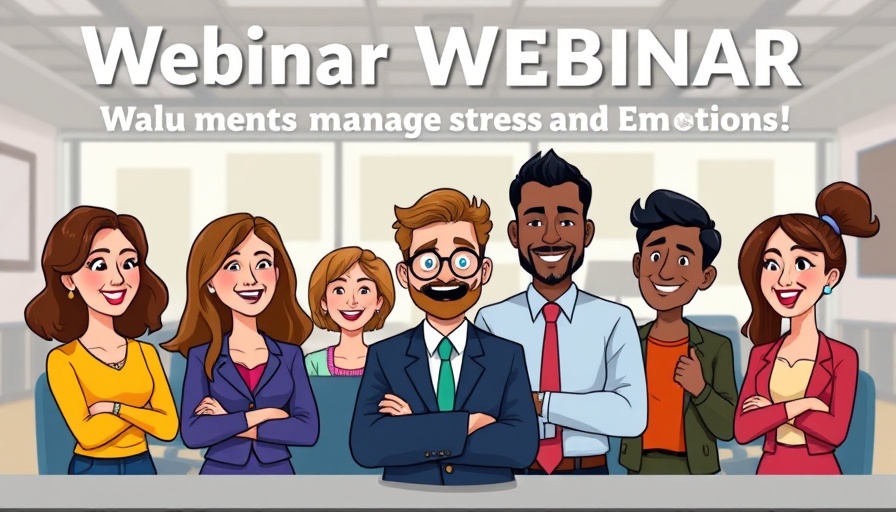
Stop Worrying: Strategies for a Healthier Mindset
In today’s fast-paced work environment, balancing responsibilities can feel overwhelming. Many of us are familiar with the nagging thoughts that plague our minds at night, stemming from worries about performance, deadlines, or workplace dynamics. Learning to manage these worries is essential not just for mental health, but for boosting productivity. Here are some effective strategies to help reduce anxiety and promote a more focused and positive mindset in the workplace.
Understanding the Impact of Worrying
Worrying isn't just mentally draining; it also affects your physical health. Stress can lead to chronic health issues, including headaches, fatigue, and digestive problems. Conversely, a clear and calm mind enhances your ability to perform tasks efficiently and creatively. Research suggests that when we learn to minimize our worries, we improve not only our mental health but also our productivity levels. This is particularly crucial in today’s competitive work landscape.
Recognizing Triggers: What Makes You Worry?
Identifying what triggers your anxiety is a vital first step in tackling worry. Is it looming deadlines? Uncertainty about job security? Having honest conversations with yourself or a trusted colleague can help pinpoint these triggers. Recognizing specific stressors allows you to develop targeted strategies for handling them, whether that’s through time management techniques or seeking support.
Practicing Mindfulness: Techniques to Stay Grounded
Incorporating mindfulness techniques into your daily routine can significantly reduce anxiety. Simple practices such as deep breathing, meditation, or even short walks during breaks can bring a sense of calm. Studies show that mindfulness helps shift focus from worries to the present moment, reducing the cycle of anxiety.
Organizing for Success: Time Management Tips
Effective time management is critical for minimizing anxiety at work. Creating to-do lists, setting priorities, and breaking tasks into smaller, more manageable steps can alleviate the feeling of being overwhelmed. Additionally, using tools like calendars or productivity apps can help keep you organized. When you know what you need to do and when, it can alleviate the nagging worries about forgetting tasks, leading to calmer days.
Connecting with Colleagues: Building a Support Network
Talking openly about your worries with colleagues can also help dispel anxiety. Building a support network at work not only enhances collaboration but also creates an environment where you can feel safe discussing your challenges. Regular check-ins with a trusted coworker can ease feelings of isolation and provide a fresh perspective on your concerns.
Taking Breaks: The Importance of Self-Care
Amidst busy workdays, it’s essential to prioritize self-care. Regular breaks can prevent burnout and enhance focus. Simple actions like stepping outside for fresh air, enjoying a few minutes of stretching, or practicing gratitude can provide a mental reset and alleviate anxiety. Remember, taking time for yourself is not a luxury; it’s a necessity for sustained productivity and mental well-being.
Conclusion: Taking Proactive Steps Towards a Worry-Free Mindset
Worrying can certainly hinder workplace performance and overall well-being. By taking proactive steps like recognizing triggers, practicing mindfulness, implementing time management strategies, building a support network, and prioritizing self-care, you can reclaim your peace of mind. Start by incorporating these strategies today, and remember: it’s perfectly okay to seek help when you need it. Taking action will lead to a healthier, more balanced work-life.
 Add Row
Add Row  Add
Add 




Write A Comment